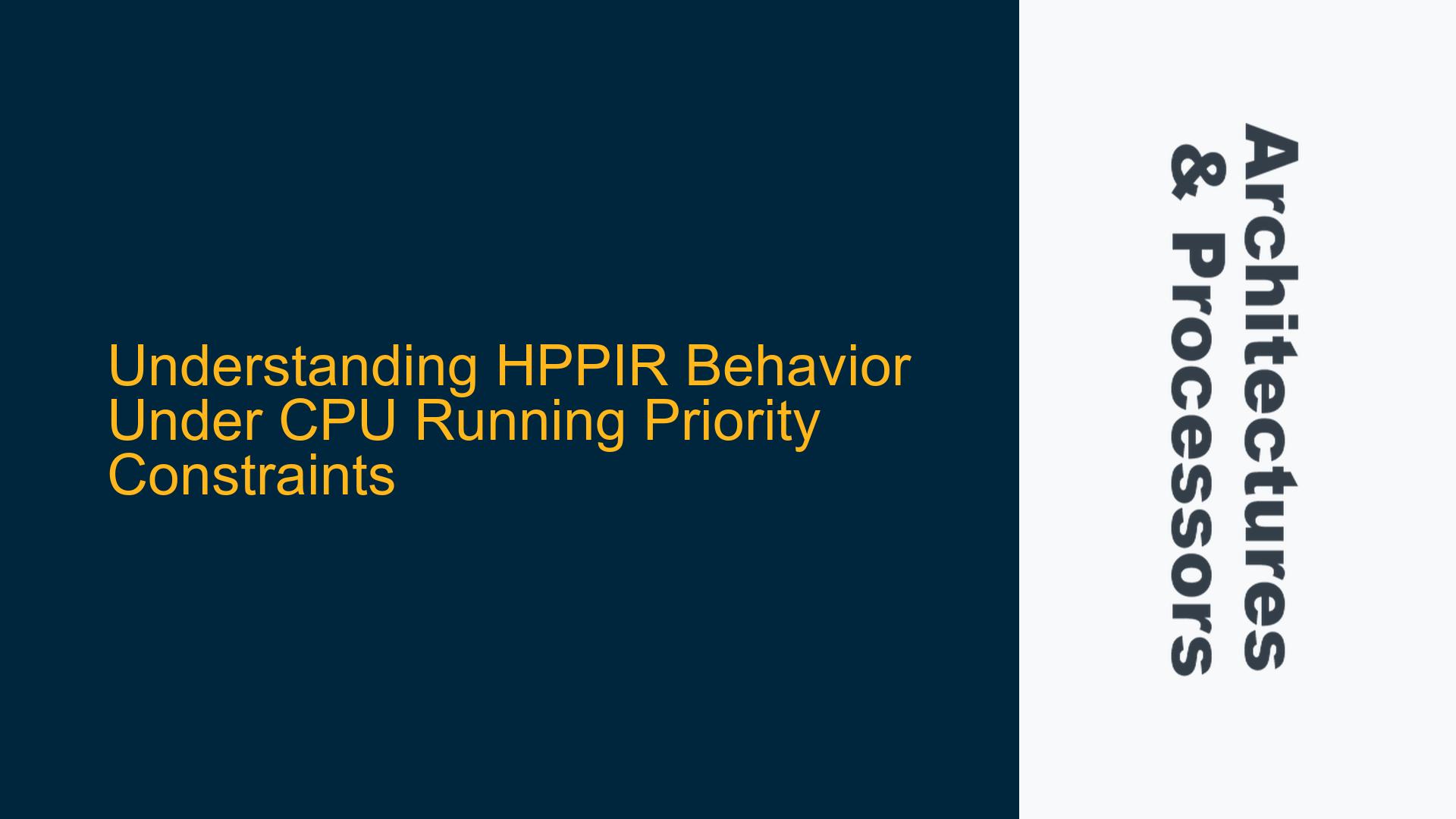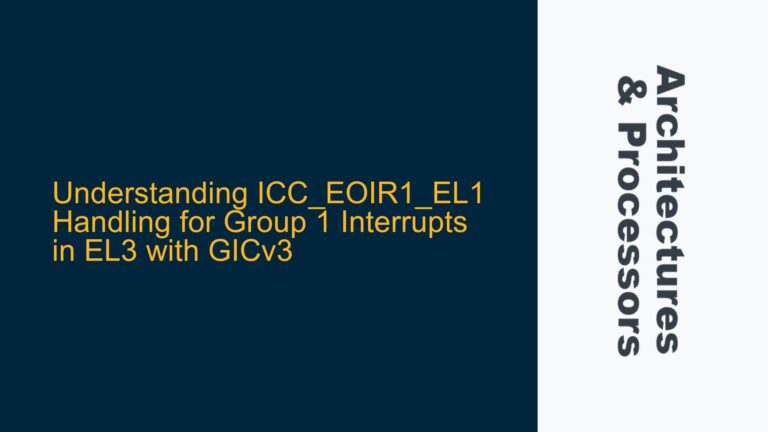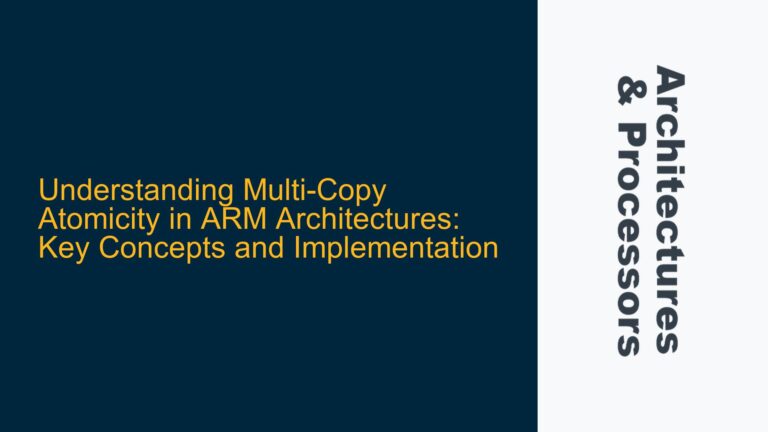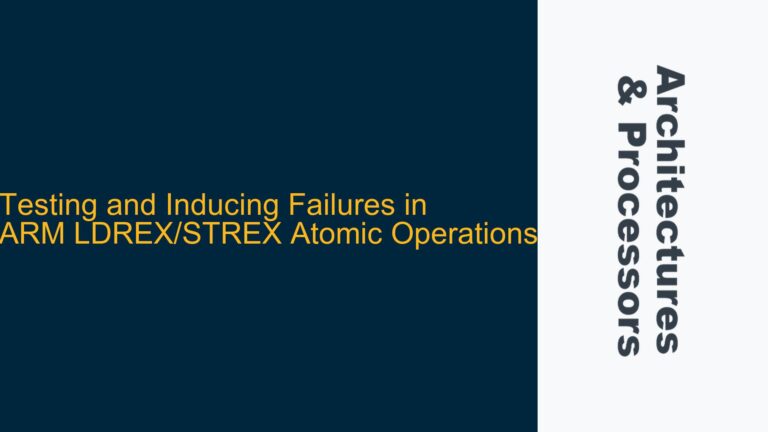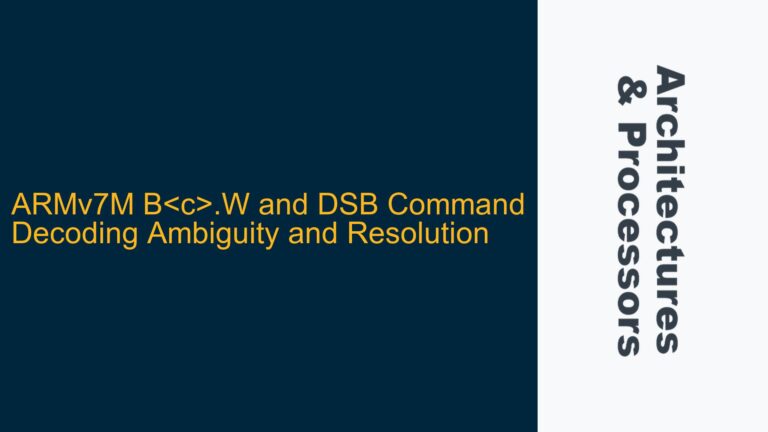ARM Cortex-M HPPIR Register and CPU Running Priority Interaction
The Highest Priority Pending Interrupt Register (HPPIR) in ARM Cortex-M processors plays a critical role in interrupt handling by identifying the highest priority pending interrupt that is eligible for execution. However, its behavior can be influenced by the current running priority of the CPU, leading to potential confusion in scenarios where multiple interrupts are active or pending. This post delves into the intricacies of how the HPPIR register interacts with the CPU’s running priority, particularly in cases where higher priority interrupts are already being serviced and lower priority interrupts arrive during their handling.
The HPPIR register is designed to report the interrupt ID (INTID) of the highest priority pending interrupt that is not masked by the current CPU running priority. This means that if the CPU is already servicing a high-priority interrupt, the HPPIR register may not reflect lower priority interrupts that are pending, depending on the configuration of the Binary Point Register (BPR) and the priority grouping scheme. Understanding this interaction is crucial for developers working on real-time systems where precise interrupt handling is required.
In the scenario described, a higher priority interrupt with priority 0 is already running, effectively setting the CPU’s running priority to 0. During the handling of this interrupt, a lower priority interrupt with priority 22 arrives. The BPR is set to 0, meaning no priority grouping is applied. The question arises: should the HPPIR register report the INTID of the lower priority interrupt or a SPURIOUS_INT (1023)? To answer this, we must examine the underlying mechanisms of interrupt prioritization, the role of the BPR, and how the CPU’s running priority affects the visibility of pending interrupts.
Binary Point Register Configuration and Interrupt Masking
The Binary Point Register (BPR) is a key component in the ARM Cortex-M interrupt handling mechanism. It determines how the interrupt priority field is split into preemptible priority bits and subpriority bits. When the BPR is set to 0, as in the scenario described, the entire priority field is used for preemptible priority, meaning no subpriorities are defined. This configuration ensures that interrupts are handled strictly based on their numerical priority values, with lower numerical values indicating higher priority.
When a high-priority interrupt is being serviced, the CPU’s running priority is elevated to match that of the active interrupt. In this case, the CPU’s running priority is 0, which is the highest possible priority. This elevated running priority effectively masks all interrupts with a lower priority, meaning they cannot preempt the currently running interrupt. However, these lower priority interrupts are still recorded as pending in the interrupt controller.
The HPPIR register is designed to report the highest priority pending interrupt that is not masked by the CPU’s running priority. In the scenario where the CPU’s running priority is 0, any pending interrupt with a priority lower than 0 (i.e., higher numerical value) would be masked. Therefore, the HPPIR register should not report the INTID of the lower priority interrupt (priority 22) because it is masked by the CPU’s running priority. Instead, the HPPIR register should report a SPURIOUS_INT (1023), indicating that there is no eligible pending interrupt to be serviced at this time.
This behavior is consistent with the ARM Cortex-M architecture’s design, which prioritizes the servicing of high-priority interrupts and ensures that lower priority interrupts do not disrupt the execution of critical tasks. However, this behavior can lead to confusion if developers are not aware of the interaction between the CPU’s running priority and the HPPIR register. It is essential to understand that the HPPIR register’s value is not solely determined by the presence of pending interrupts but also by the current state of the CPU’s running priority and the configuration of the BPR.
Implementing Priority-Based Interrupt Handling Strategies
To effectively manage interrupt handling in ARM Cortex-M processors, developers must implement strategies that account for the interaction between the CPU’s running priority and the HPPIR register. One such strategy is to carefully configure the BPR to ensure that the priority grouping scheme aligns with the system’s requirements. For example, if subpriorities are needed, the BPR should be configured to allocate some bits to subpriority, allowing for finer-grained control over interrupt handling.
Another important consideration is the use of interrupt nesting, where higher priority interrupts are allowed to preempt lower priority ones. In the scenario described, if interrupt nesting is enabled, the lower priority interrupt (priority 22) could potentially preempt the higher priority interrupt (priority 0) if the BPR is configured to allow it. However, this would require careful management of the CPU’s running priority and the interrupt controller’s state to ensure that the system remains stable and responsive.
Developers should also be aware of the potential for interrupt latency, which can be affected by the CPU’s running priority and the configuration of the BPR. If the CPU’s running priority is set too high, lower priority interrupts may experience significant delays in being serviced, leading to increased latency and potential system performance issues. To mitigate this, developers should carefully balance the priority levels of interrupts and ensure that the BPR is configured to allow for timely servicing of all critical interrupts.
In conclusion, the behavior of the HPPIR register in ARM Cortex-M processors is influenced by the CPU’s running priority and the configuration of the BPR. In the scenario where a high-priority interrupt is being serviced, the HPPIR register should report a SPURIOUS_INT (1023) for any lower priority interrupts that are pending, as they are masked by the CPU’s running priority. Understanding this interaction is crucial for developers working on real-time systems, as it allows for the implementation of effective interrupt handling strategies that ensure system stability and performance. By carefully configuring the BPR and managing the CPU’s running priority, developers can optimize interrupt handling and minimize latency, leading to more reliable and responsive embedded systems.
